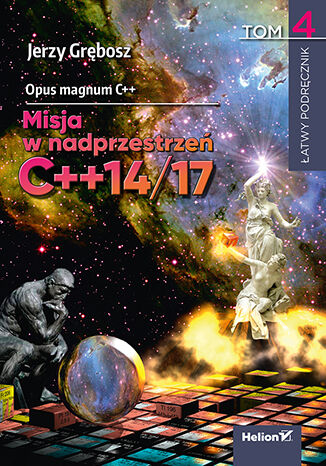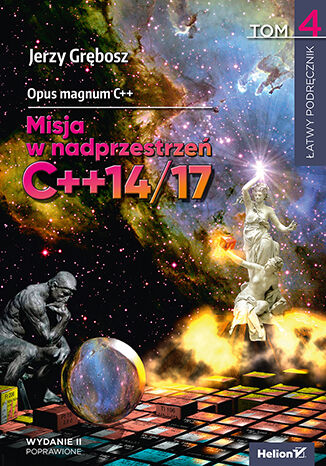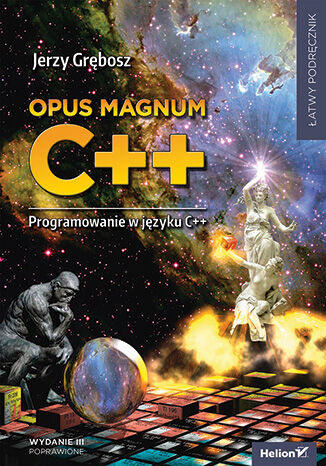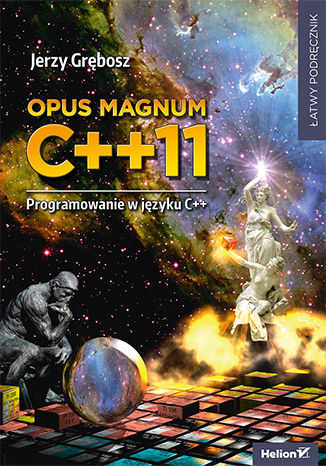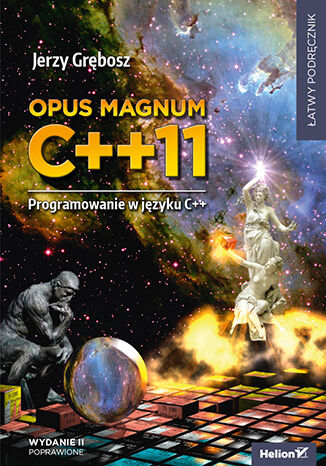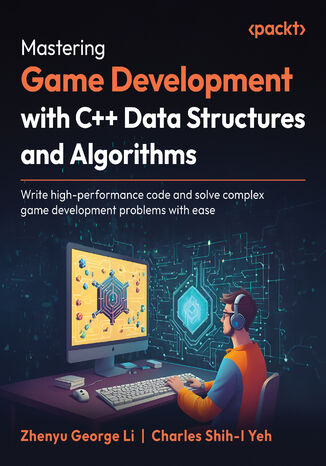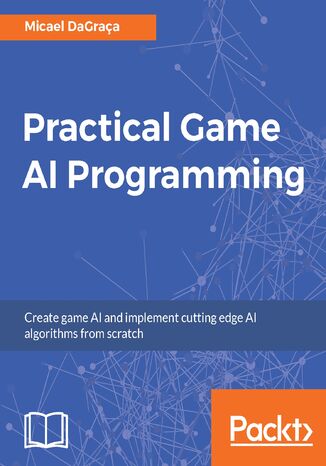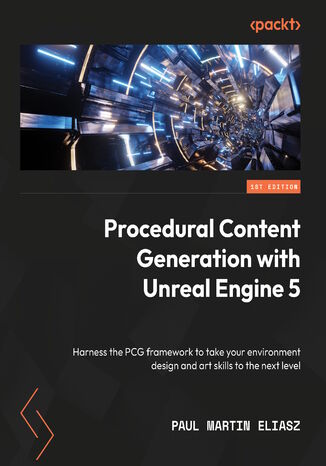Категорії
Електронні книги
-
Бізнес та економіка
- Біткойн
- Ділова жінка
- Коучинг
- Контроль
- Електронний бізнес
- Економіка
- Фінанси
- Фондова біржа та інвестиції
- Особисті компетенції
- Комп'ютер в офісі
- Комунікація та переговори
- Малий бізнес
- Маркетинг
- Мотивація
- Мультимедійне навчання
- Нерухомість
- Переконання та НЛП
- Податки
- Соціальна політика
- Порадники
- Презентації
- Лідерство
- Зв'язки з громадськістю
- Звіти, аналізи
- Секрет
- Соціальні засоби комунікації
- Продаж
- Стартап
- Ваша кар'єра
- Управління
- Управління проектами
- Людські ресурси (HR)
-
Для дітей
-
Для молоді
-
Освіта
-
Енциклопедії, словники
-
Електронна преса
- Architektura i wnętrza
- Безпека життєдіяльності
- Biznes i Ekonomia
- Будинок та сад
- Електронний бізнес
- Ekonomia i finanse
- Езотерика
- Фінанси
- Особисті фінанси
- Бізнес
- Фотографія
- Інформатика
- Відділ кадрів та оплата праці
- Для жінок
- Комп'ютери, Excel
- Бухгалтерія
- Культура та література
- Наукові та академічні
- Охорона навколишнього середовища
- Впливові
- Освіта
- Податки
- Подорожі
- Психологія
- Релігія
- Сільське господарство
- Ринок книг і преси
- Транспорт та спедиція
- Здоров'я та краса
-
Історія
-
Інформатика
- Офісні застосунки
- Бази даних
- Біоінформатика
- Бізнес ІТ
- CAD/CAM
- Digital Lifestyle
- DTP
- Електроніка
- Цифрова фотографія
- Комп'ютерна графіка
- Ігри
- Хакування
- Hardware
- IT w ekonomii
- Наукові пакети
- Шкільні підручники
- Основи комп'ютера
- Програмування
- Мобільне програмування
- Інтернет-сервери
- Комп'ютерні мережі
- Стартап
- Операційні системи
- Штучний інтелект
- Технологія для дітей
- Вебмайстерність
-
Інше
-
Іноземні мови
-
Культура та мистецтво
-
Шкільні читанки
-
Література
- Антології
- Балада
- Біографії та автобіографії
- Для дорослих
- Драми
- Журнали, щоденники, листи
- Епос, епопея
- Нарис
- Наукова фантастика та фантастика
- Фельєтони
- Художня література
- Гумор, сатира
- Інше
- Класичний
- Кримінальний роман
- Нехудожня література
- Художня література
- Mity i legendy
- Лауреати Нобелівської премії
- Новели
- Побутовий роман
- Okultyzm i magia
- Оповідання
- Спогади
- Подорожі
- Оповідна поезія
- Поезія
- Політика
- Науково-популярна
- Роман
- Історичний роман
- Проза
- Пригодницька
- Журналістика
- Роман-репортаж
- Romans i literatura obyczajowa
- Сенсація
- Трилер, жах
- Інтерв'ю та спогади
-
Природничі науки
-
Соціальні науки
-
Шкільні підручники
-
Науково-популярна та академічна
- Археологія
- Bibliotekoznawstwo
- Кінознавство / Теорія кіно
- Філологія
- Польська філологія
- Філософія
- Finanse i bankowość
- Географія
- Економіка
- Торгівля. Світова економіка
- Історія та археологія
- Історія мистецтва і архітектури
- Культурологія
- Мовознавство
- літературні студії
- Логістика
- Математика
- Ліки
- Гуманітарні науки
- Педагогіка
- Навчальні засоби
- Науково-популярна
- Інше
- Психологія
- Соціологія
- Театральні студії
- Богослов’я
- Економічні теорії та науки
- Transport i spedycja
- Фізичне виховання
- Zarządzanie i marketing
-
Порадники
-
Ігрові посібники
-
Професійні та спеціальні порадники
-
Юридична
- Безпека життєдіяльності
- Історія
- Дорожній кодекс. Водійські права
- Юридичні науки
- Охорона здоров'я
- Загальне, компендіум
- Академічні підручники
- Інше
- Закон про будівництво і житло
- Цивільне право
- Фінансове право
- Господарське право
- Господарське та комерційне право
- Кримінальний закон
- Кримінальне право. Кримінальні злочини. Кримінологія
- Міжнародне право
- Міжнародне та іноземне право
- Закон про охорону здоров'я
- Закон про освіту
- Податкове право
- Трудове право та законодавство про соціальне забезпечення
- Громадське, конституційне та адміністративне право
- Кодекс про шлюб і сім'ю
- Аграрне право
- Соціальне право, трудове право
- Законодавство Євросоюзу
- Промисловість
- Сільське господарство та захист навколишнього середовища
- Словники та енциклопедії
- Державні закупівлі
- Управління
-
Путівники та подорожі
- Африка
- Альбоми
- Південна Америка
- Центральна та Північна Америка
- Австралія, Нова Зеландія, Океанія
- Австрія
- Азії
- Балкани
- Близький Схід
- Болгарія
- Китай
- Хорватія
- Чеська Республіка
- Данія
- Єгипет
- Естонія
- Європа
- Франція
- Гори
- Греція
- Іспанія
- Нідерланди
- Ісландія
- Литва
- Латвія
- Mapy, Plany miast, Atlasy
- Мініпутівники
- Німеччина
- Норвегія
- Активні подорожі
- Польща
- Португалія
- Інше
- Przewodniki po hotelach i restauracjach
- Росія
- Румунія
- Словаччина
- Словенія
- Швейцарія
- Швеція
- Світ
- Туреччина
- Україна
- Угорщина
- Велика Британія
- Італія
-
Психологія
- Філософія життя
- Kompetencje psychospołeczne
- Міжособистісне спілкування
- Mindfulness
- Загальне
- Переконання та НЛП
- Академічна психологія
- Психологія душі та розуму
- Психологія праці
- Relacje i związki
- Батьківство та дитяча психологія
- Вирішення проблем
- Інтелектуальний розвиток
- Секрет
- Сексуальність
- Спокушання
- Зовнішній вигляд та імідж
- Філософія життя
-
Релігія
-
Спорт, фітнес, дієти
-
Техніка і механіка
Аудіокниги
-
Бізнес та економіка
- Біткойн
- Ділова жінка
- Коучинг
- Контроль
- Електронний бізнес
- Економіка
- Фінанси
- Фондова біржа та інвестиції
- Особисті компетенції
- Комунікація та переговори
- Малий бізнес
- Маркетинг
- Мотивація
- Нерухомість
- Переконання та НЛП
- Податки
- Соціальна політика
- Порадники
- Презентації
- Лідерство
- Зв'язки з громадськістю
- Секрет
- Соціальні засоби комунікації
- Продаж
- Стартап
- Ваша кар'єра
- Управління
- Управління проектами
- Людські ресурси (HR)
-
Для дітей
-
Для молоді
-
Освіта
-
Енциклопедії, словники
-
Електронна преса
-
Історія
-
Інформатика
-
Інше
-
Іноземні мови
-
Культура та мистецтво
-
Шкільні читанки
-
Література
- Антології
- Балада
- Біографії та автобіографії
- Для дорослих
- Драми
- Журнали, щоденники, листи
- Епос, епопея
- Нарис
- Наукова фантастика та фантастика
- Фельєтони
- Художня література
- Гумор, сатира
- Інше
- Класичний
- Кримінальний роман
- Нехудожня література
- Художня література
- Mity i legendy
- Лауреати Нобелівської премії
- Новели
- Побутовий роман
- Okultyzm i magia
- Оповідання
- Спогади
- Подорожі
- Поезія
- Політика
- Науково-популярна
- Роман
- Історичний роман
- Проза
- Пригодницька
- Журналістика
- Роман-репортаж
- Romans i literatura obyczajowa
- Сенсація
- Трилер, жах
- Інтерв'ю та спогади
-
Природничі науки
-
Соціальні науки
-
Науково-популярна та академічна
-
Порадники
-
Професійні та спеціальні порадники
-
Юридична
-
Путівники та подорожі
-
Психологія
- Філософія життя
- Міжособистісне спілкування
- Mindfulness
- Загальне
- Переконання та НЛП
- Академічна психологія
- Психологія душі та розуму
- Психологія праці
- Relacje i związki
- Батьківство та дитяча психологія
- Вирішення проблем
- Інтелектуальний розвиток
- Секрет
- Сексуальність
- Спокушання
- Зовнішній вигляд та імідж
- Філософія життя
-
Релігія
-
Спорт, фітнес, дієти
-
Техніка і механіка
Відеокурси
-
Бази даних
-
Big Data
-
Biznes, ekonomia i marketing
-
Кібербезпека
-
Data Science
-
DevOps
-
Для дітей
-
Електроніка
-
Графіка / Відео / CAX
-
Ігри
-
Microsoft Office
-
Інструменти розробки
-
Програмування
-
Особистісний розвиток
-
Комп'ютерні мережі
-
Операційні системи
-
Тестування програмного забезпечення
-
Мобільні пристрої
-
UX/UI
-
Веброзробка, Web development
-
Управління
Подкасти
C++
Opus magnum C++. Misja w nadprzestrzeń C++14/17. Tom 4
C++ - mierz wysoko! C++ to jeden z najpopularniejszych i najpotężniejszych języków programowania. Stanowi punkt wyjścia dla wielu innych języków, które odziedziczyły po nim składnię i liczne możliwości, dzięki czemu można śmiało stwierdzić, że znajomość C++ otwiera drzwi do świata nowoczesnego programowania i jest podstawą na wymagającym rynku pracy w branży informatycznej. Czasy się zmieniają, lecz to C++ jest wciąż wybierany wszędzie tam, gdzie liczą się możliwości, elastyczność, wydajność i stabilność. Książka, którą trzymasz w rękach, to kontynuacja genialnego kompendium Opus magnum C++11. Programowanie w języku C++. Autor, wybitny specjalista z ogromnym doświadczeniem w międzynarodowych projektach i twórca niezwykle popularnego podręcznika Symfonia C++, postanowił uzupełnić swoje dzieło o zagadnienia, dla których zabrakło miejsca w poprzednich tomach. Jeśli chcesz poszerzyć wiedzę na temat szablonów oraz poznać możliwości najnowszych standardów języka C++, nie mogłeś lepiej trafić! Najważniejsze informacje o nowych możliwościach języka C++ Praktyczne przykłady zastosowania konstrukcji Ćwiczenia utrwalające zdobytą wiedzę Rusz w kolejną misję z C++ na pokładzie!
Opus magnum C++. Misja w nadprzestrzeń C++14/17. Tom 4. Wydanie II poprawione
C++ - mierz wysoko! C++ to jeden z najpopularniejszych i najpotężniejszych języków programowania. Stanowi punkt wyjścia dla wielu innych języków, które odziedziczyły po nim składnię i liczne możliwości, dzięki czemu można śmiało stwierdzić, że znajomość C++ otwiera drzwi do świata nowoczesnego programowania i jest podstawą na wymagającym rynku pracy w branży informatycznej. Czasy się zmieniają, lecz to C++ jest wciąż wybierany wszędzie tam, gdzie liczą się możliwości, elastyczność, wydajność i stabilność. Książka, którą trzymasz w rękach, to kontynuacja genialnego kompendium Opus magnum C++. Programowanie w języku C++. Autor, wybitny specjalista z ogromnym doświadczeniem w międzynarodowych projektach i twórca niezwykle popularnego podręcznika Symfonia C++, postanowił uzupełnić swoje dzieło o zagadnienia, dla których zabrakło miejsca w poprzednich tomach. Jeśli chcesz poszerzyć wiedzę na temat szablonów oraz poznać możliwości najnowszych standardów języka C++, nie mogłeś lepiej trafić! Najważniejsze informacje o nowych możliwościach języka C++ Praktyczne przykłady zastosowania konstrukcji Ćwiczenia utrwalające zdobytą wiedzę Rusz w kolejną misję z C++ na pokładzie!
Opus magnum C++. Programowanie w języku C++. Wydanie III poprawione (komplet)
Jedno C i same plusy! Dawno, dawno temu, w głębokich latach osiemdziesiątych ubiegłego wieku pewien duński informatyk zainspirowany językiem C opracował jeden z najważniejszych, najbardziej elastycznych i do dziś niezastąpionych języków programowania — C++. Dziś ten język jest wykorzystywany do tworzenia gier komputerowych, obliczeń naukowych, technicznych, w medycynie, przemyśle i bankowości. NASA posługuje się nim w naziemnej kontroli lotów. Duża część oprogramowania Międzynarodowej Stacji Kosmicznej została napisana w tym języku. Nawet w marsjańskim łaziku Curiosity pracuje program w C++, który analizuje obraz z kamer i planuje dalszą trasę. Autor tej książki — wybitny specjalista pracujący nad wieloma znaczącymi projektami we francuskich, niemieckich i włoskich instytutach fizyki jądrowej, znany czytelnikom m.in. z genialnej Symfonii C++ — postawił sobie za cel napisanie nowej, przekrojowej książki o tym języku, która w prostym, wręcz przyjacielskim stylu wprowadza czytelnika w fascynujący świat programowania zorientowanego obiektowo. Zobacz, jak potężny jest dzisiaj C++ 11. Jeżeli chcesz nauczyć się tego języka w łatwy, pogodny, przyjazny sposób, ta książka jest właśnie dla Ciebie. Dzięki tej książce poznasz: Proste i złożone typy danych Instrukcje sterujące Funkcje i operatory Wskaźniki Klasy i dziedziczenie Obsługę wyjątków Wyrażenia lambda Operacje wejścia-wyjścia Projektowanie orientowane obiektowo Szablony
Opus magnum C++11. Programowanie w języku C++ (komplet)
Książka "Opus Magnum C++11" Jerzego Grębosza zdobyła wyróżnienie w kategorii podręczników w konkursie na Najlepszą Polską Książkę Informatyczną 2018r. organizowanym przez Polskie Towarzystwo Informatyczne. "Opus magnum C++11. Programowanie w języku C++" - zestaw obejmuje 3 podręczniki. Jedno C i same plusy! Dawno, dawno temu, w głębokich latach osiemdziesiątych ubiegłego wieku pewien duński informatyk zainspirowany językiem C opracował jeden z najważniejszych, najbardziej elastycznych i do dziś niezastąpionych języków programowania — C++. Dziś ten język jest wykorzystywany do tworzenia gier komputerowych, obliczeń naukowych, technicznych, w medycynie, przemyśle i bankowości. NASA posługuje się nim w naziemnej kontroli lotów. Duża część oprogramowania Międzynarodowej Stacji Kosmicznej została napisana w tym języku. Nawet w marsjańskim łaziku Curiosity pracuje program w C++, który analizuje obraz z kamer i planuje dalszą trasę. Autor tej książki — wybitny specjalista pracujący nad wieloma znaczącymi projektami we francuskich, niemieckich i włoskich instytutach fizyki jądrowej, znany czytelnikom m.in. z genialnej Symfonii C++ — postawił sobie za cel napisanie nowej, przekrojowej książki o tym języku, która w prostym, wręcz przyjacielskim stylu wprowadza czytelnika w fascynujący świat programowania zorientowanego obiektowo. Zobacz, jak potężny jest dzisiaj C++ 11. Jeżeli chcesz nauczyć się tego języka w łatwy, pogodny, przyjazny sposób, ta książka jest właśnie dla Ciebie. Dzięki tej książce poznasz: Proste i złożone typy danych Instrukcje sterujące Funkcje i operatory Wskaźniki Klasy i dziedziczenie Obsługę wyjątków Wyrażenia lambda Operacje wejścia-wyjścia Projektowanie orientowane obiektowo Szablony
Opus magnum C++11. Programowanie w języku C++. Wydanie II poprawione (komplet)
"Opus magnum C++ 11. Programowanie w języku C++. Wydanie II poprawione" – zestaw obejmuje 3 tomy. Jedno C i same plusy! Dawno, dawno temu, w głębokich latach osiemdziesiątych ubiegłego wieku pewien duński informatyk zainspirowany językiem C opracował jeden z najważniejszych, najbardziej elastycznych i do dziś niezastąpionych języków programowania - C++. Dziś ten język jest wykorzystywany do tworzenia gier komputerowych, obliczeń naukowych, technicznych, w medycynie, przemyśle i bankowości. NASA posługuje się nim w naziemnej kontroli lotów. Duża część oprogramowania Międzynarodowej Stacji Kosmicznej została napisana w tym języku. Nawet w marsjańskim łaziku Curiosity pracuje program w C++, który analizuje obraz z kamer i planuje dalszą trasę. Autor tej książki - wybitny specjalista pracujący nad wieloma znaczącymi projektami we francuskich, niemieckich i włoskich instytutach fizyki jądrowej, znany czytelnikom m.in. z genialnej Symfonii C++ - postawił sobie za cel napisanie nowej, przekrojowej książki o tym języku, która w prostym, wręcz przyjacielskim stylu wprowadza czytelnika w fascynujący świat programowania zorientowanego obiektowo. Zobacz, jak potężny jest dzisiaj C++ 11. Jeżeli chcesz nauczyć się tego języka w łatwy, pogodny, przyjazny sposób, ta książka jest właśnie dla Ciebie. Dzięki tej książce poznasz: Proste i złożone typy danych Instrukcje sterujące Funkcje i operatory Wskaźniki Klasy i dziedziczenie Obsługę wyjątków Wyrażenia lambda Operacje wejścia-wyjścia Projektowanie orientowane obiektowo Szablony
Zhenyu George Li, Charles Shih-I Yeh, Dr. E. Wyn Roberts
Game development demands performance-driven solutions—from rendering complex 3D scenes to managing AI behavior and handling animations. This hands-on book guides you in solving these challenges using high-performance C++ data structures and algorithms. The authors distill their decades of combined industry experience to help you apply practical C++ techniques to create smooth, scalable, and intelligent games. Instead of pseudocode or abstract theory, you’ll work with real, executable examples that translate directly to your projects. Demos in this book have been developed based on raylib library, providing accessible and efficient foundations for learning.Opening with a structured overview of algorithmic thinking in C++ game development, the book covers advanced algorithms and their applications in real-world game scenarios. You’ll implement data structures that optimize game functionality, solve algorithmic problems efficiently, and enhance gameplay with robust AI and rendering techniques. In addition, the key focus is collision detection, 2D/3D rendering, animation, camera controls, and machine learning-driven AI, all through practical, executable C++ code.By the end of this book, you’ll be able to confidently apply advanced C++ techniques to develop efficient, scalable, and feature-rich gameplay systems for modern games.
Practical Game AI Programming. Unleash the power of Artificial Intelligence to your game
The book starts with the basics examples of AI for different game genres and directly jumps into defining the probabilities and possibilities of the AI character to determine character movement. Next, you’ll learn how AI characters should behave within the environment created.Moving on, you’ll explore how to work with animations. You’ll also plan and create pruning strategies, and create Theta algorithms to find short and realistic looking game paths. Next, you’ll learn how the AI should behave when there is a lot of characters in the same scene.You'll explore which methods and algorithms, such as possibility maps, Forward Chaining Plan, Rete Algorithm, Pruning Strategies, Wall Distances, and Map Preprocess Implementation should be used on different occasions. You’ll discover how to overcome some limitations, and how to deliver a better experience to the player. By the end of the book, you think differently about AI.
In the ever-evolving world of games and virtual production, mastering procedural content generator (PCG) opens the door to endless creative possibilities. This book takes you deeper into the realm of procedurally generated environments and assets by showing you how to use the PCG framework integrated into Unreal Engine 5.4 and helping you build the skills to surpass traditional methods and create cutting-edge projects with unparalleled efficiency.This book guides you through the complete level design and tools production pipeline using open-source software. Whether you’re an aspiring technical artist or level designer in real-time visualization and game production, you’ll benefit from following the step-by-step, beginner-friendly approach to crafting custom levels, from jungles to cities, and incorporating 3D assets from libraries such as Quixel or Sketchfab. Next, you’ll get to grips with data preparation, construct a PCG graph to populate assets in your environment, and apply these methods to optimize your projects. You’ll understand how this process enhances your PCG tools, elevating their capacity to improve the quality of your levels.By the end of this book, you’ll be able to seamlessly integrate different elements in Unreal Engine 5, empowering you to create your own PCG tools and transform your game development experience.

